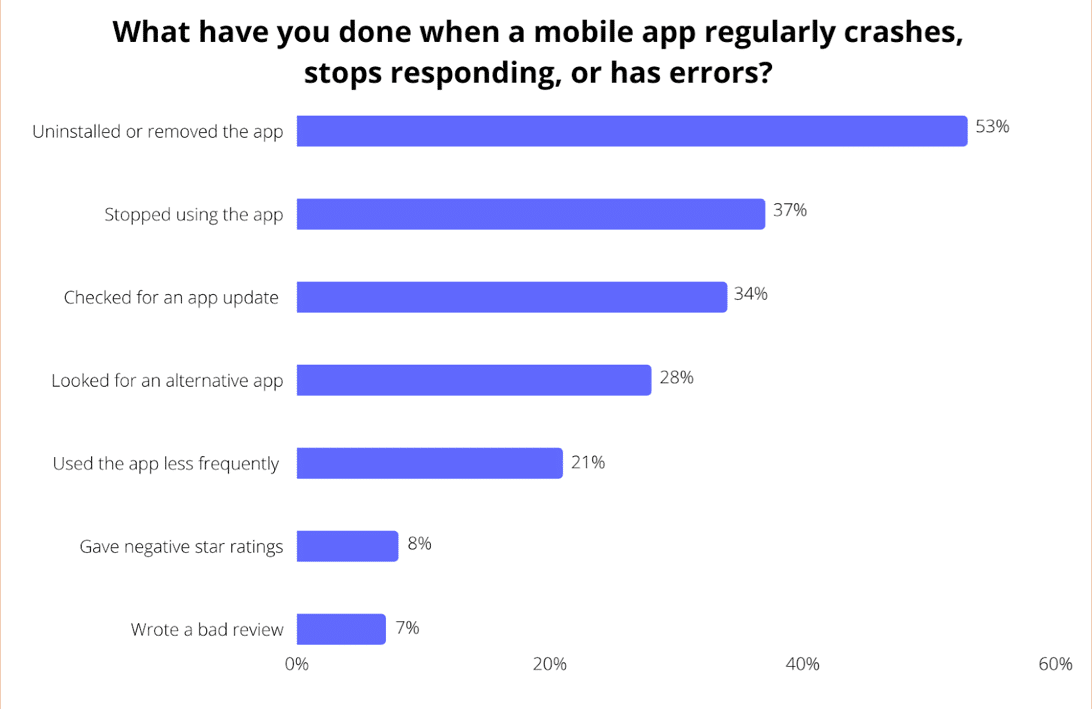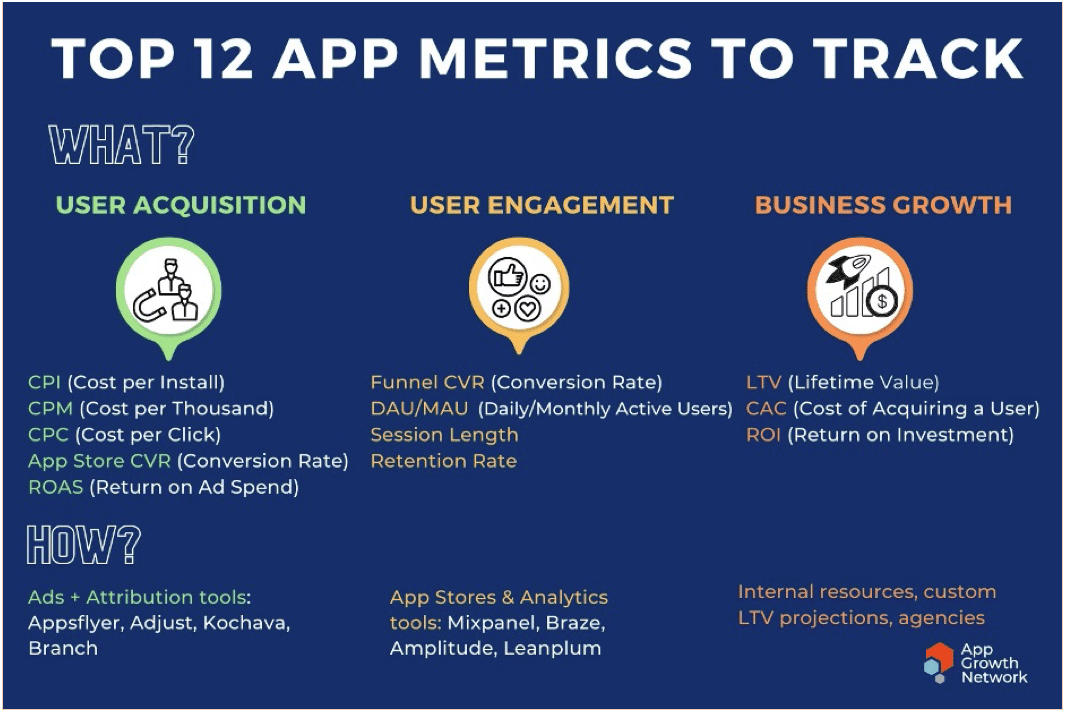Smartphones are an essential part of modern life. By 2022, there were 6.57 billion smartphone users worldwide, and there could be seven billion by 2024. This makes mobiles one of the best ways for businesses to connect with customers. How? There’s an app for that. Businesses have apps to facilitate sales, raise brand awareness, and manage loyalty programs. In fact, they’re becoming a regular part of many customer journeys.
Maybe you want to create a mobile application for an existing business. Or maybe you want to use it to create a new business. Either way, there are several steps you should follow. This guide will walk you through those steps so you can create an app even if you have no technical knowledge.
Things to consider before you create a mobile application:
Who is your app aimed at?
The first thing you need to think about is who your app is for. Get to know your target audience:
- What do they want from an app?
- What problems are they looking to solve?
Unless you have a clearly defined audience, you could end up building an app your customers don’t use. So look on social media and customer review sites, and ask customers for feedback.
Apple, Android, or both?
Most smartphones are either Apple or Android. Google Play is the largest app store with 3.48 million apps, while the Apple App Store is the second-largest with 2.23 million apps. Both platforms have their own advantages and guidelines. The solution? Launching on both platforms will ensure your app reaches the widest possible audience.
Where will your app fit in the market?
As any management book will tell you, you need to conduct market research to determine where your app will fit in the market. Market research could include:
- Conducting interviews with existing customers.
- Mapping out your customer journey.
- Researching your competitors.
Researching the competition can provide invaluable insights. Make a list of competitors’ apps and note their features, name, and price. Also, look at customer reviews. What do customers like about the app? What annoys them? This can help you avoid common mistakes and create a mobile application your customers love.
What are your goals?
Before you embark on a project, you need to know what your goals are. Make your goals SMART: Specific, Measurable, Achievable, Realistic, and Time-sensitive. Without measurable goals, your project could end up late and over-budget. So it’s important to include key performance indicators (KPIs) for each goal.
The best KPIs are numerical. For instance, one of your goals could be to reduce customer churn by 10 percent. In this case, your churn rate is your KPI. To measure success, you’d compare your current churn rate with the churn rate after your app launches.
Step 1: Choose your app features
To create a mobile application, you first need to choose which features it should have. Popular features include:
- Push notifications
- Ecommerce carts
- Surveys, questionnaires, and comments
- Customer loyalty programs
- Booking or menu ordering
Start by listing all the app features you’d like to include. Then sort your list into ‘essential’ and ‘nice to have’. For now, you want to focus on essential features, like how customers will log on and how they’ll make a purchase. A mobile app development company in Dubai can help streamline this process and ensure the app meets user needs. You can always add some ‘nice to have’ features after your app launches, and you may find you don’t need to. The key is to keep it simple – and think about what you want users to do.
Step 2: Create a mock-up of your app
Next, think about how your customers will use the essential features you listed in step one. How will they navigate around the app? Will there be a tab at the top, or a sidebar that slides out? How many screens will there be, or how many checkout steps? Have a look at how popular apps are organized, and do some research on user experience (UX) and user interface (UI). You want your app to be intuitive and easy to use.
At this stage, don’t go into too much detail; that comes later. For now, jot down ideas and do some sketches to help you visualize and organize each screen.
Step 3: Design your app
Now comes the fun part of any app or website development: design. You need to create graphics that represent the look of the final product. You will need to make design decisions like:
- Color scheme. This will depend on factors like your business’s branding and who your app is for.
- App icon. This could be a pre-existing company logo, or a new logo you create.
- Background and splash screen. These could be blocks of color, or images you upload.
- Layout. This is particularly important as it affects your UX. You want everything in your app to be easy to find and intuitive to use.
- Fonts and colors. You should choose fonts and colors that are easy to read.
- Accessibility. Different users have different abilities, so you need to provide an inclusive experience. You should research how to cater for people with colorblindness and other access requirements.
You could hire a professional designer, or use an app builder like AppyPie or BuildFire.
Step 4: Build your app
There are several ways you can go about building your app:
- Build it yourself. This involves coding, so is the most time-consuming option. Also, bear in mind that building an app should involve protecting against cyberattacks and other security concerns.
- Hire a freelancer or app development company. Another option is to hire a freelancer or app developer to build the app for you. Freelancers are cheaper, but a mobile app development company can provide consulting and project management services.
- Use an app builder. There are several app building services that let you customize pre-built templates. They usually charge a monthly fee for keeping your app running.
- Buy an app template. This involves buying pre-packaged code that comes with the core functionality you need. You can then customize it yourself or pay someone else to customize it for you.
Step 5: Test your app
Once you’ve built your app, you need to test it. Many apps launch too soon and end up frustrating users with glitches and crashes. It’s essential to identify and fix bugs beforehand so that your app makes a good first impression.
First, you need to smoke test your app. Don’t panic if you’re wondering what is smoke testing in software?—it’s just making sure your app runs smoothly at the outset. After smoke testing, you can move onto alpha and beta testing. Alpha testing involves testing the app on-site, while beta testing involves releasing the app to a small number of users.
It’s also worth conducting automated tests, but what is test automation? It’s when you use software to run tests instead of human testers. Automated testing is faster and more reliable, so it’s a great way to save time and money.
Step 6: Launch your app
Once you’ve ironed out any bugs, it’s time for launch. That means submitting it to Google Play, the Apple App Store, and any other app stores you choose. Each app store has different submission criteria, so it’s important to familiarize yourself with them.
You could start by having a look at the App Store guidelines and the Google Play guidelines.
Step 7: Market your app
To make your app a success, you need to acquire online users with marketing. Marketing falls into two categories:
- Pre-launch marketing.
- Post-launch marketing.
Pre-launch marketing
Before launching your app, set up a dedicated landing page for it on your website. You can add a media kit that includes logos and key information that journalists can use to write about your app. Also, tell your existing customers about the app (if you have them) and build a pre-launch email list.
You could even share your app-building journey on social media with posts, videos, and images. This is a great way to get people interested, and you might inspire them to have a go too!
Post-launch marketing
After your app launches, there are several ways you can market it:
- Email your pre-launch list to tell them your app is live.
- Hold a press release.
- Do some paid advertising with Facebook Ads, Google Ads, or any other popular platform.
- Market your app on your social media channels. You could even consider influencer marketing if your budget can stretch that far.
Step 8: Improve your app with user feedback
Users expect new features, software updates, and bug fixes. So you should ask users for feedback on what they like about your app and how you can improve it. You can gather feedback by:
- Asking users to rate the app.
- Sending out surveys and conducting interviews.
- Tracking KPIs and app analytics like downloads, uninstalls, and time spent in the app.
Next steps
Many businesses use apps to connect with customers and improve the customer experience. To create a mobile application, you need to design it, build it, and test it with mobile app testing services. Understanding the principles of effective mobile design is crucial to ensuring your app is user-friendly and engaging during the design phase. But you also need to market it and improve it with user feedback.
In this guide, we looked at the different stages of app building to get you started. The next step is to research the different professionals and app building platforms available to help you. And start building your dream app!









